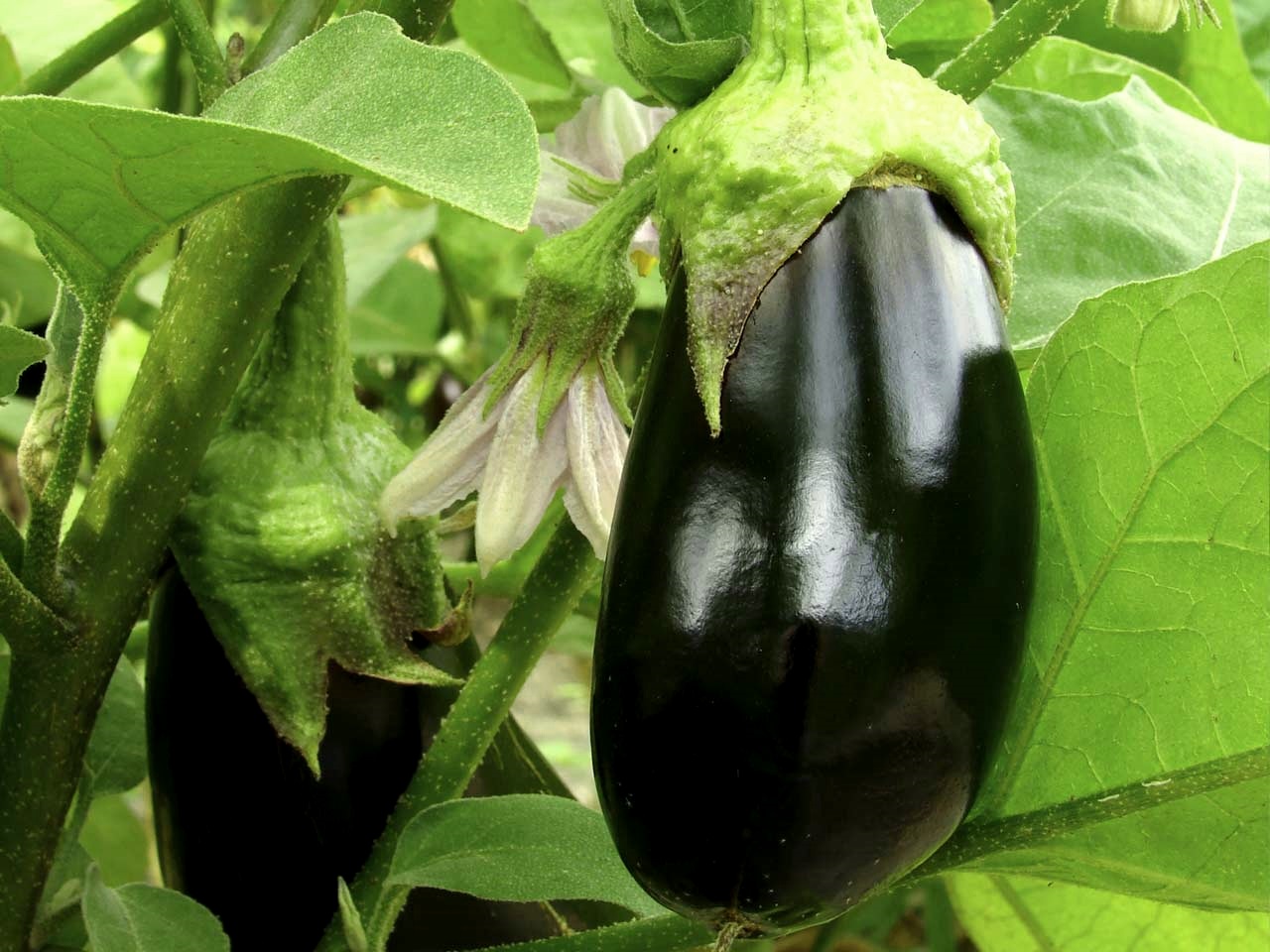
In the midland and North-West Russia will need to work hard to harvest the “little blue ones”. Knowing the peculiarities of agricultural technology of culture will help to avoid mistakes in caring for eggplants in the greenhouse, and even in the northern regions to please themselves and the family with their own hand-grown crops.
Content
Compliance with the temperature regime
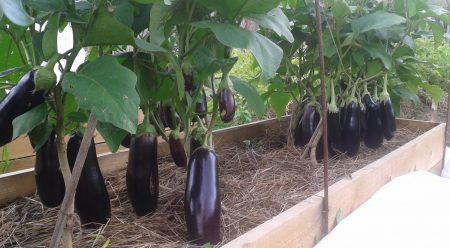
Temperature indicators should always be monitored. The mercury column went down - additionally cover the plants in the greenhouse with non-woven material. For eggplants, the critical indicator is below + 15ºC, since cooling causes plant depression, stunting. Leaves fall, change bright saturated color to pale, and then fall off.
Overheating is dangerous when the temperature rises above + 29ºC. Strong heat and stuffiness in the greenhouse cause curl of leaves, drying out, falling of ovaries. In the heat in shelters, eggplants are protected from direct sunlight by a shading grid, covering thin material. Airing is mandatory, but the doors open only on one side so that there are no drafts
How to Water Eggplant
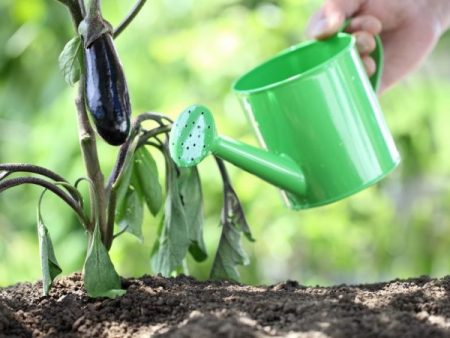
Eggplant - lovers of moisture, but at the same time it is impossible to allow strong overmoistening. When growing crops of the nightshade family, it is necessary to find a balance, taking into account weather conditions, the condition of the soil, plants.
The root system of the culture is weak, the delivery of moisture to leaves, flowers and fruits is slow, with insufficient watering the bush instantly loses its ovaries. On light soils it is easier to control the moisture level, on heavy soils, in order to avoid an excess of moisture, they add a little peat, carefully loosen the earth after each watering.
Incorrect watering rates:
- plants drop leaves sharply - they pour eggplant with cold water;
- drying and twisting of leaves, dumping of flowers, wilting of the tops of the plant - lack of moisture in the soil;
- yellowing of leaf plates, dropping of ovaries - an excess of moisture in the soil, poor soil aeration.
After planting, eggplant is watered after 2-3 days, abundantly soaking the soil. Norm - 2-3 liters for each bush. Subsequent watering - after 6-7 days, standing and heated to + 20ºC ... + 23ºC. In hot weather, they are watered 2-3 times a week, on cloudy days one watering is enough for eggplant. Before and during the flowering period, there should be no breaks in irrigation, otherwise the ovaries of such plants develop poorly, give crushed and deformed fruits.
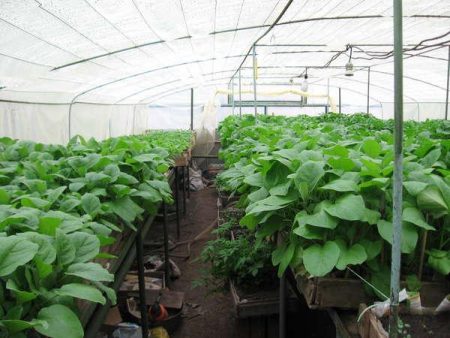
Watered into the holes, grooves, preventing the erosion of the soil at the roots. Culture loves moist soil, and this is easiest to achieve with mulch. Around the plants, a layer of mowed and dried grass, straw, sawdust is carefully laid, the thickness is up to 10 cm. Mulching saves the soil from the formation of a hard crust, helps preserve moisture in the soil, and simplifies eggplant maintenance.
To better moisturize the soil in a layer of mulch, make several punctures and pour water directly into them.
When using drip irrigation systems in greenhouses for irrigation, it is necessary to build an additional tank for heating water in the sun so that it comes to plants warm.
Eggplant dressing
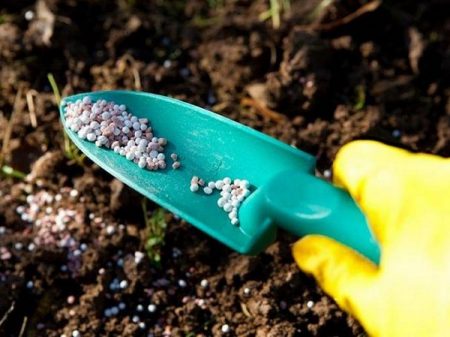
Tasty and beautiful purple fruits will grow only with the right fertilizing. The usual amount for the summer is 4-5 top dressings, but if the soil has been seasoned with enough fertilizers (compost, rotted manure, humus, ash), then three top dressings are carried out during the summer.
From organics fit:
- mullein;
- bird droppings;
- peat;
- ash.
All fertilizers must be diluted with water, applied strictly according to the norm.
Of the mineral compositions for eggplant use:
- ammonium nitrate;
- superphosphate;
- potassium sulfate;
- complex fertilizers (nitrofoska);
- finished compounds of Agricola, Kemira, Ideal.
Good results on this culture showed:
- fertilizer solution;
- Universal crystal;
- Stimulus drug;
- special plantafol complex (suitable for making mixtures with fungicides).
Eggplant seedlings are fed twice, preparing an ash infusion or watering seedlings with prepared fertilizers.
Before flowering
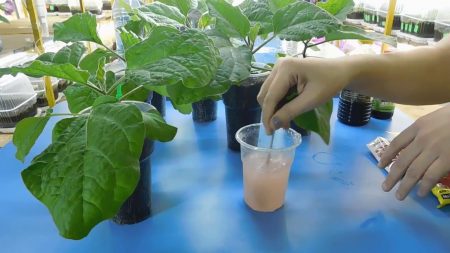
After planting in the greenhouse, the greenhouse is fertilized no earlier than 14-16 days.
Options:
- complex fertilizer (Kemira, Mortar) - according to the instructions;
- Mullein diluted in water (1:10), 2 liters per plant;
- in a bucket of warm water dissolve a teaspoon of ammonium nitrate, two of the same spoon of potassium sulfate, three tablespoons of superphosphate.
During flowering
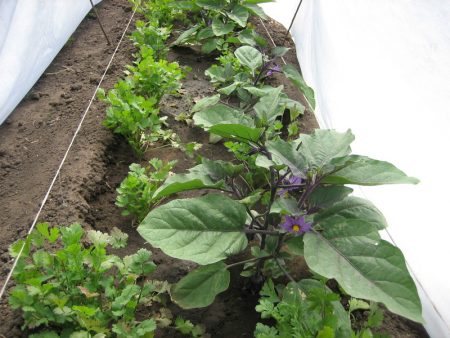
When the eggplant blooms, they prepare other top dressings:
- green “cocktail” (2/3 barrel is covered with chopped grass, poured with warm water, tightly closed and insisted for 8-10 days).
- in a bucket dissolve ammonium nitrate (1.5 tablespoons), a tablespoon of potassium sulfate, pour eggplant per liter per bush;
- three glasses of nitrophoska per bucket of water, bred, watered per liter under a bush.
During fruiting

When the first fruits go, the “blue ones” are fed with complex fertilizers (amofoska, nitrofoska), breeding according to the instructions, and pouring 1-1.5 liters under the plant.
It is useful to dust the soil around the bushes with wood ash. This not only improves the nutrition of vegetables, but also protects them from infections, pests.
On poor soils, plants are fed once a week, but do not exceed the norm and control the state of eggplant. A deficiency of certain substances is recognized by the appearance of eggplant.
What to do with nitrogen deficiency
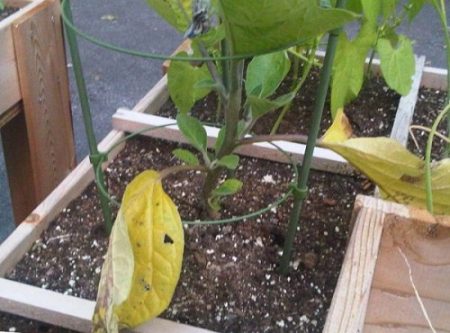
Old eggplant leaves turn yellow, the process goes from the tips to the middle of the leaf blade. Young leaves fade, the color is whitish or pale green, yellow.
Help: water the plants with urea solution, diluting 150 grams of fertilizer in 10 liters of water.
With phosphorus deficiency
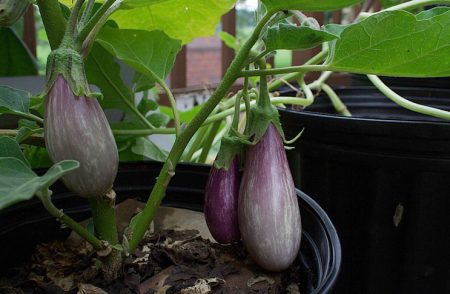
Large leaves of eggplant turn yellow, dark purple spots appear on the surface, then they turn black (necrosis). Leaves fall.
Help: 150 grams of superphosphate are bred in a bucket of warm water (10 liters).
With a deficiency of potassium, magnesium
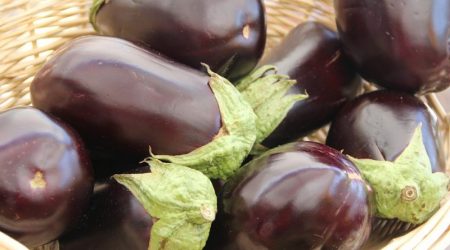
Young leaves are covered with a yellow border. With a lack of potassium, small holes form in the leaf blades.
Help: plants are fed with magnesium sulfate, wood ash is added (ash is added as an infusion or dusted soil around the bushes).
Eggplant Formation
Eggplant herding is a must for getting a good result. When removing the extra shoots, an even beautiful crown of the plant is formed, all the ovaries receive good lighting, the fruits grow strong, healthy, without defects.
Shrubs are formed in greenhouses, controlling the condition of plants and preventing their thickening.
Weakened plants do not stepson, the procedure is postponed to late.
Low-growing varieties of culture do not stepchild, they only remove yellowed leaves and shoots. They make sure that the bushes do not grow too wide, do not interfere with neighboring plants.
Tall bushes are formed in several ways:
- in one stem (suitable for greenhouses and hotbeds of small area);
- in two stems;
- in three stems (if there is free space in the shelter).
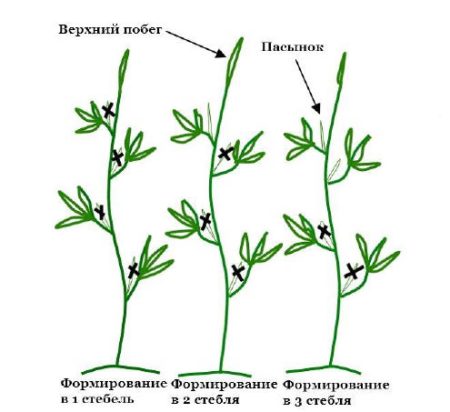
Single Stem Formation
Leave only one stem, removing all side shoots, extra ovaries. 7-8 ovaries are left on the bush. Formation begins 18-20 days after the eggplant is planted in a permanent place.
Two stalk formation
In medium-tall and tall plants, two trunks are left, carefully removing all others. Pinch the stems at a height of 35-40 cm. Then, on two stems, remove all the stepsons that appeared.
Three stalk formation
After the first fork, two strong trunks are left on the central shoot. All other shoots are cut. Two weeks later, stepsons grow on the left trunks, from which one of the strongest is chosen, they leave it, others pinch it.
The procedures are carried out in the morning, with stepsons, leaves are removed, controlling the degree of illumination of the ovaries of the eggplant and fruits. With a lack of light, the ovaries crumble, the yield decreases.
The lower leaves are gradually removed, as they take nutrients from the roots, interfere with the normal ventilation of plants, and contribute to the appearance of rot. In the lower part of the stem leave no more than two leaf plates.
Eggplant Garter
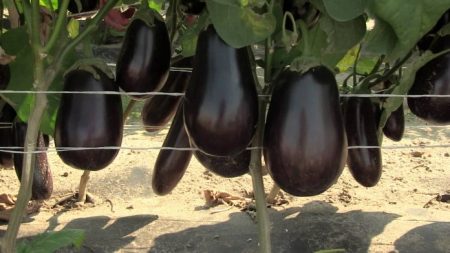
In closed ground, eggplant grows fast, so powerful bushes need garter. Trellis is suitable as a support for low-growing varieties; for tall plants, trellises or stakes are installed.
Garter is performed under each branching of the shoots of the bush, so that under the weight of the fruits the fragile stems do not break.
Eggplant Pollination
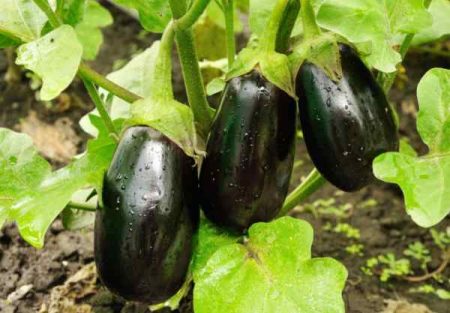
Eggplant flowers are large with beautiful petals. Coloring varies from light lilac to dark purple. In the sinuses is 2-3 flowers, with bright yellow-orange stamens.
The plant is pollinated by insects; for better formation of the ovaries, it is recommended to shake the bushes slightly during flowering to show off pollen.
Disease protection
In violation of agricultural technology, adverse weather conditions, various infections occur. Gardeners must be able to quickly identify the disease and apply appropriate treatment.
Late blight
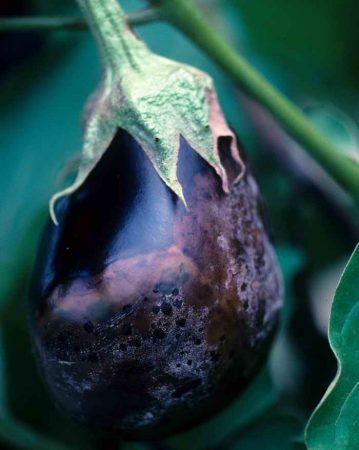
A dangerous infection in which dark brown spots appear on the leaves of plants. Gradually, traces of sporulation appear on the underside of the leaf blades;
Treatment
Plants are treated with Antracnol, Ridomil Gold. The soil is shed with a solution of Fitosporin-M.
Mosaic
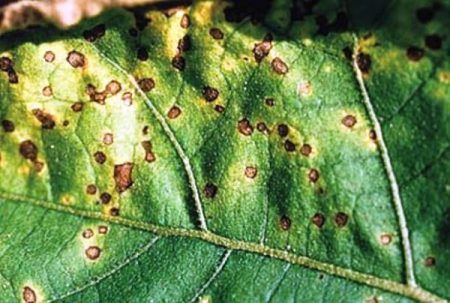
Eggplant leaf blades are covered with a small light green pattern that looks like a mosaic. A yellowish net forms on the surface of the fruit.
Treatment
Heavily affected plants are carefully dug up and burned. Sick bushes, the soil around is treated with Farmayod-3. Proportions: for tillage: 10 ml of the composition is taken on a bucket of water, 3 ml will be required for spraying bushes on a bucket of water.
Alternariosis
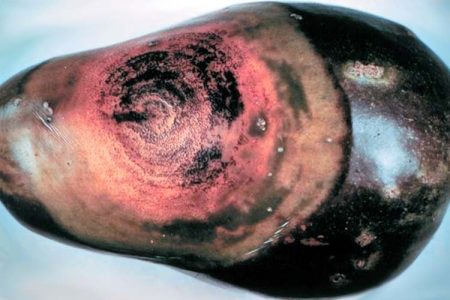
Brown leaves with a yellowish border form on the leaves of the eggplant. Later a velvety coating (spores) is formed. The leaves dry and die.
Treatment
The soil in the garden is treated with Trichodermin. Bushes of eggplant are sprayed with Thanos, Quadrice, Ridomil Gold compounds (according to instructions).
Verticillosis
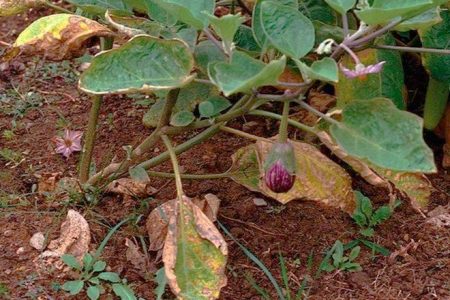
With this infection, the leaves and shoots of eggplant gradually turn yellow, then the whole plant dries and dies.
Treatment
In the early stages, treatment with Previkur is effective. It is recommended to shed the soil with Trichodermin.
Stolbur
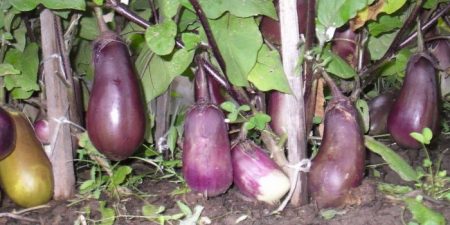
Green leaves of eggplant begin to acquire a reddish color, the stalk thickens. Beautiful flowers of the plant turn green, sterilization occurs, the ovaries are not formed.
Treatment
Effective treatment has not been developed. At the first sign of disease, the bushes are dug up and burned.
Eggplant Pest Protection
Gardeners are given a lot of trouble fighting pests of culture. Timely measures taken will allow you to quickly get rid of uninvited guests, save the harvest.
Spider mite
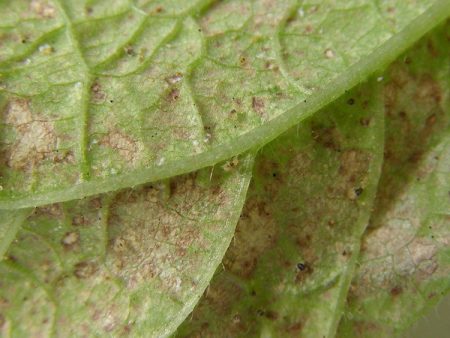
Numerous yellow dots appear on the back of the leaf blades. A thin web is visible around the leaves and shoots. The plant slows down in growth, dries up.
Control measures
Treatment of bushes with Fufanon.
Aphid
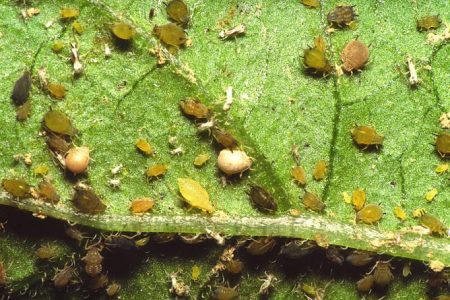
Eggplant leaves curl, insect colonies are visible on the back. Yellow spots appear, a sticky copper pad. The appearance of aphids is also indicated by a large number of ants that eat sweet pest secretions.
Control measures
Eggplant treatment with Fitoverm.
Greenhouse whitefly
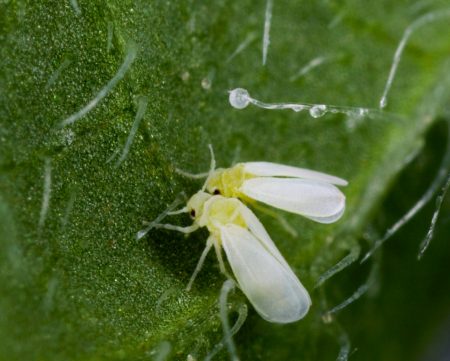
The leaves turn yellow, a cloudy whitish coating appears. Then they twist and dry. On the back of the leaf blades egg clutches are noticeable.
Control measures
Plants are sprayed with Verticillin BT.
Folk recipes
For the prevention and deterrence of pests, formulations prepared according to folk recipes are used:
- infusions of chamomile, wormwood leaves of a nut;
- spraying with ash infusion (take 1.5-2 glasses of ash on a bucket of water, insist 24 hours);
- infusion of dandelion leaves, chopped garlic, onion heads.
Observance of the correct agricultural technology, careful systematic care - and beautiful and healthy eggplants will certainly grow on your site.

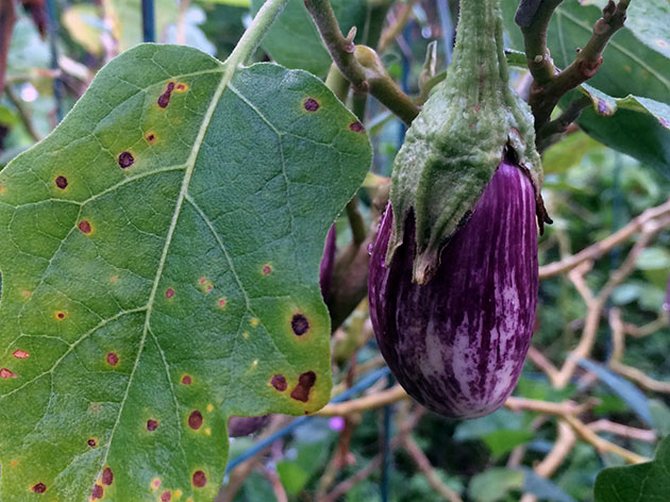
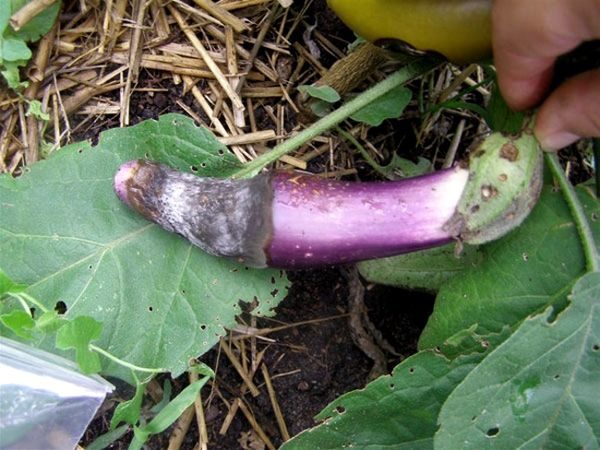
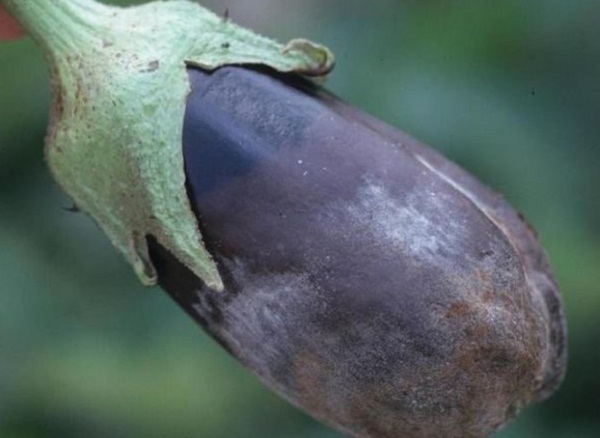
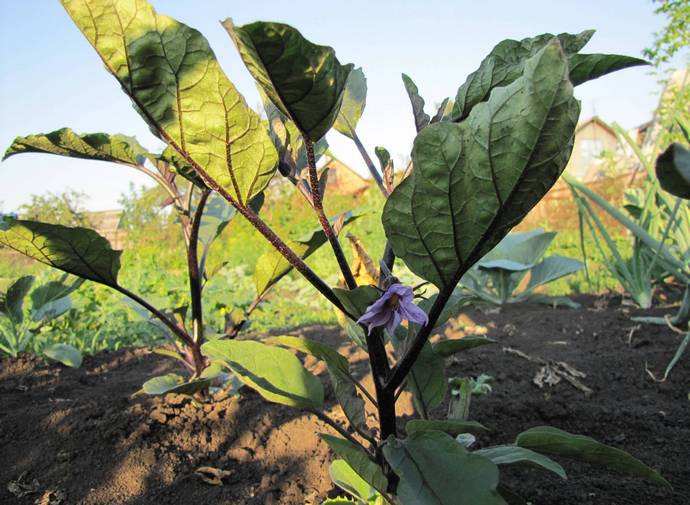 Eggplant have a empty flower? Save together with simple methods
Eggplant have a empty flower? Save together with simple methods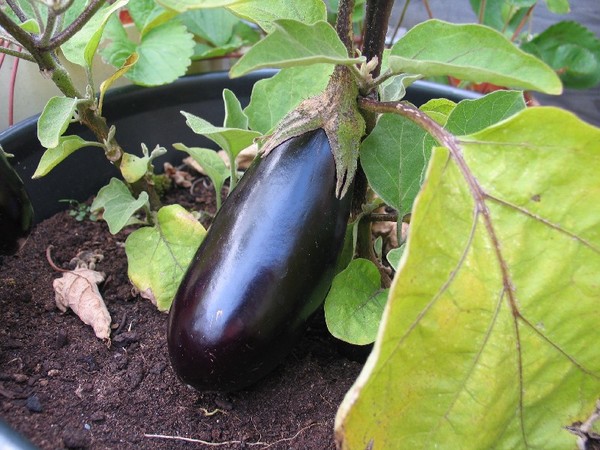 Why and what to do if the leaves turn yellow and wilt in the eggplant
Why and what to do if the leaves turn yellow and wilt in the eggplant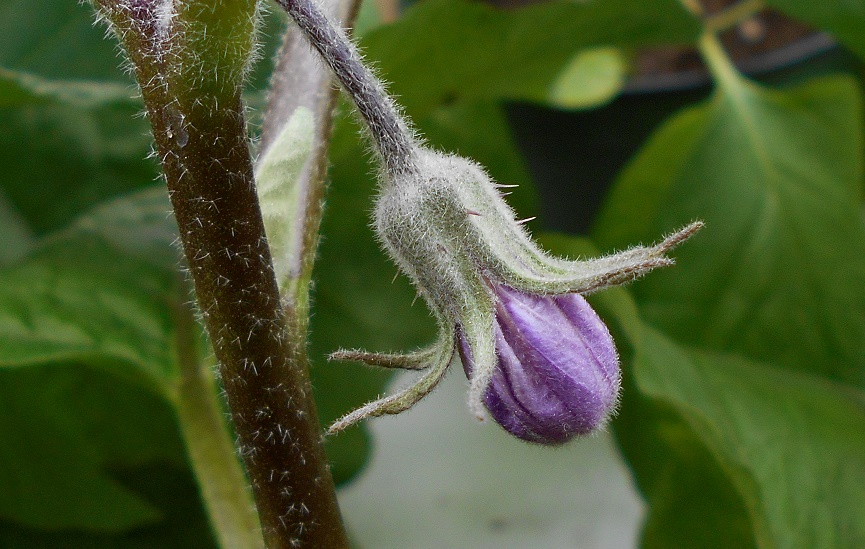 How to help eggplant so that the flowers in the greenhouse do not fall off?
How to help eggplant so that the flowers in the greenhouse do not fall off?